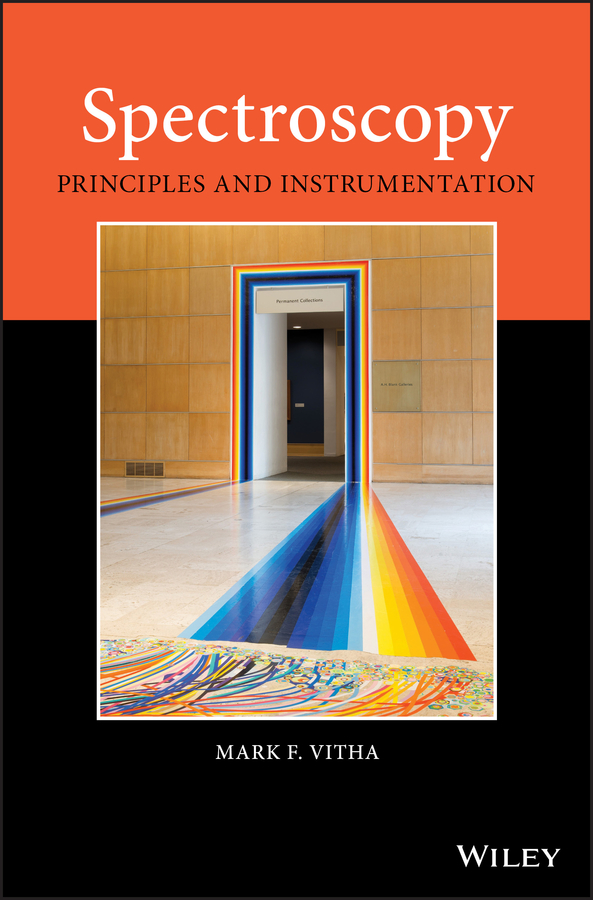Электронная книга: Mark Vitha F. «Spectroscopy. Principles and Instrumentation»

|
Provides students and practitioners with a comprehensive understanding of the theory of spectroscopy and the design and use of spectrophotometers In this book, you will learn the fundamental principles underpinning molecular spectroscopy and the connections between those principles and the design of spectrophotometers. Spectroscopy, along with chromatography, mass spectrometry, and electrochemistry, is an important and widely-used analytical technique. Applications of spectroscopy include air quality monitoring, compound identification, and the analysis of paintings and culturally important artifacts. This book introduces students to the fundamentals of molecular spectroscopy– including UV-visible, infrared, fluorescence, and Raman spectroscopy – in an approachable and comprehensive way. It goes beyond the basics of the subject and provides a detailed look at the interplay between theory and practice, making it ideal for courses in quantitative analysis, instrumental analysis, and biochemistry, as well as courses focused solely on spectroscopy. It is also a valuable resource for practitioners working in laboratories who regularly perform spectroscopic analyses. Spectroscopy: Principles and Instrumentation: Provides extensive coverage of principles, instrumentation, and applications of molecular spectroscopy Facilitates a modular approach to teaching and learning about chemical instrumentation Helps students visualize the effects that electromagnetic radiation in different regions of the spectrum has on matter Connects the fundamental theory of the effects of electromagnetic radiation on matter to the design and use of spectrophotometers Features numerous figures and diagrams to facilitate learning Includes several worked examples and companion exercises throughout each chapter so that readers can check their understanding Offers numerous problems at the end of each chapter to allow readers to apply what they have learned Includes case studies that illustrate how spectroscopy is used in practice, including analyzing works of art, studying the kinetics of enzymatic reactions, detecting explosives, and determining the DNA sequence of the human genome Complements Chromatography: Principles and Instrumentation The book is divided into five chapters that cover the Fundamentals of Spectroscopy, UV-visible Spectroscopy, Fluorescence/Luminescence Spectroscopy, Infrared Spectroscopy, and Raman Spectroscopy. Each chapter details the theory upon which the specific techniques are based, provides ways for readers to visualize the molecular-level effects of electromagnetic radiation on matter, describes the design and components of spectrophotometers, discusses applications of each type of spectroscopy, and includes case studies that illustratespecific applications of spectroscopy. Each chapter is divided into multiple sections using headings and subheadings, making it easy for readers to work through the book and to find specific information relevant to their interests. Numerous figures, exercises, worked examples, and end-of-chapter problems reinforce important concepts and facilitate learning. Spectroscopy: Principles and Instrumentation is an excellent text that prepares undergraduate students and practitioners to operate in modern laboratories. Издательство: "John Wiley&Sons Limited (USD)"
ISBN: 9781119436638 электронная книга Купить за 7154.35 руб и скачать на Litres |
Другие книги автора:
| Книга | Описание | Год | Цена | Тип книги |
|---|---|---|---|---|
| Hydrophilic Interaction Chromatography. A Guide for Practitioners | Discover how to use HILIC to analyze and better understand polar compounds An increasingly popular analytical method, hydrophilic interaction chromatography (HILIC) has the ability to retain and… — John Wiley&Sons Limited, электронная книга Подробнее... | электронная книга | ||
| Chromatography. Principles and Instrumentation | Provides students and practitioners with a solid grounding in the theory of chromatography, important considerations in its application, and modern instrumentation. Highlights the primary variables… — John Wiley&Sons Limited, электронная книга Подробнее... | электронная книга | ||
| Circulating Tumor Cells. Isolation and Analysis | Introduces the reader to Circulating Tumor Cells (CTCs), their isolation method and analysis, and commercially available platforms Presents the historical perspective and the overview of the field of… — John Wiley&Sons Limited, электронная книга Подробнее... | электронная книга | ||
| High Throughput Analysis for Food Safety | This book focuses on high-throughput analyses for food safety. Because of the contributors domestic and international expertise from industry and government the book appeals to a wider audience. It… — John Wiley&Sons Limited, электронная книга Подробнее... | электронная книга |
См. также в других словарях:
spectroscopy — spectroscopist /spek tros keuh pist/, n. /spek tros keuh pee, spek treuh skoh pee/, n. the science that deals with the use of the spectroscope and with spectrum analysis. [1865 70; SPECTRO + SCOPY] * * * Branch of analysis devoted to identifying… … Universalium
Spectroscopy — Analysis of white light by dispersing it with a prism is example of spectroscopy. Spectroscopy ( … Wikipedia
Ultraviolet–visible spectroscopy — Beckman DU640 UV/Vis spectrophotometer. Ultraviolet visible spectroscopy or ultraviolet visible spectrophotometry (UV Vis or UV/Vis) refers to absorption spectroscopy or reflectance spectroscopy in the ultraviolet visible spectral region. This… … Wikipedia
Mathematics and Physical Sciences — ▪ 2003 Introduction Mathematics Mathematics in 2002 was marked by two discoveries in number theory. The first may have practical implications; the second satisfied a 150 year old curiosity. Computer scientist Manindra Agrawal of the… … Universalium
Fluorescence spectroscopy — aka fluorometry or spectrofluorometry, is a type of electromagnetic spectroscopy which analyzes fluorescence from a sample. It involves using a beam of light, usually ultraviolet light, that excites the electrons in molecules of certain compounds … Wikipedia
Noise-immune cavity-enhanced optical heterodyne molecular spectroscopy — (NICE OHMS) is an ultra sensitive laser based absorption technique that utilizes laser light to assess the concentration or the amount of a species in gas phase by absorption spectrometry (AS). Contents 1 Principles 1.1 Types of signals 1.2… … Wikipedia
